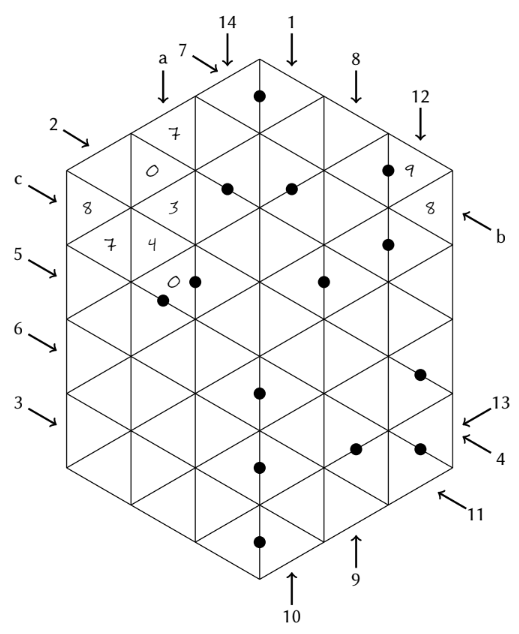
Mathematician Matthew Scroggs has released this year’s Christmas card for Chalkdust magazine. (Actually I’m late — it’s been out since December 4.)
Solving 14 puzzles will reveal a Christmas-themed picture in this diagram.

Mathematician Matthew Scroggs has released this year’s Christmas card for Chalkdust magazine. (Actually I’m late — it’s been out since December 4.)
Solving 14 puzzles will reveal a Christmas-themed picture in this diagram.
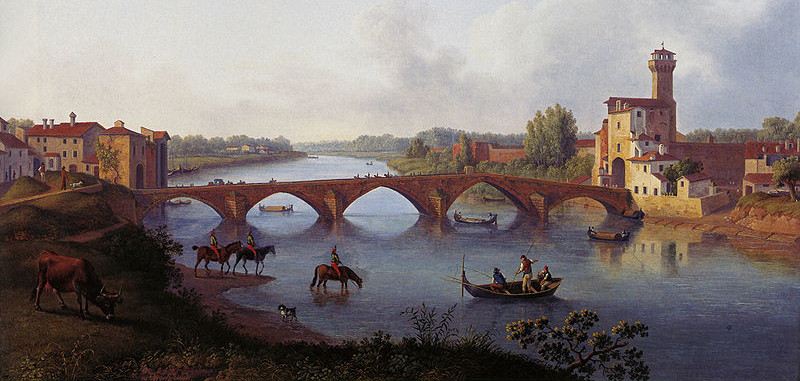
“There’s nothing more boring on this earth than to have to read the description of an Italian journey, except maybe to have to write one — and the writer can only make it halfway bearable by speaking as little as possible of Italy itself.” — Heinrich Heine
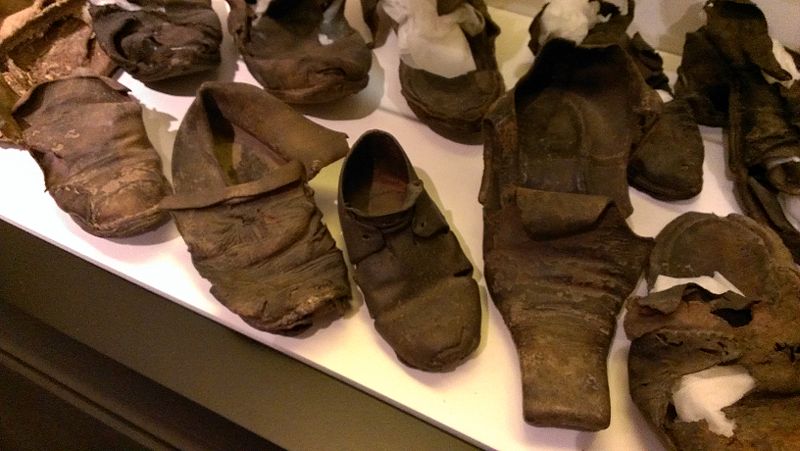
England’s Northampton Museum maintains a Concealed Shoe Index that documents the discovery of shoes hidden in the structure of buildings, 1900 of them as of 2012.
This seems to have been a tradition that was once widespread and that died out relatively recently — the first such shoe was discovered behind the choirstalls in Winchester Cathedral, which were installed in 1308, and almost half are from the 19th century. Most have been worn, and about half belonged to children.
Why did people do this? The shoes may have been a fertility charm, or offerings to a household deity, or protections against evil spirits. But the practice was evidently once very popular — concealed shoes have been found in Europe, North America, and Australia, and in many types of buildings: workhouses, factories, public houses, country cottages, town houses, manor houses, hospitals, and two Oxford colleges, St John’s and Queen’s.
On the second day of Apollo 16’s trip to the moon in 1972, command module pilot Ken Mattingly lost his wedding ring. “It just floated off somewhere, and none of us could find it,” lunar module pilot Charlie Duke told Wired in 2016.
Mattingly looked for it intermittently over the ensuing week, with no luck. By the eighth day, Duke and Commander John Young had visited the moon and rejoined him, but there was still no sign of the ring.
But during a spacewalk the following day, Mattingly was just heading back toward the open hatch when Duke said, “Look at that!” The ring was floating just outside the hatch. “I grabbed it,” he said, “and we put it in the pocket. We had the chances of a gazillion to one.”
Duke said later, “You plan and plan and plan but the unexpected always jumps up and bites you.”
(From Ben Evans, Foothold in the Heavens: The Seventies, 2010.)
English comedian Stanley Unwin invented his own language, “Basic Engly Twenty Fido,” a playfully twisted version of English that he said had been inspired by his mother, who once told him that she had “falolloped over” and “grazed her kneeclabbers.”
After that, he said, he became “a masterlode of the verbally thrips oratory.” Asked his opinion of Elvis Presley, he said, “Well, from across the herring-pole where harth the people has produced some waspwaist and swivel-hippy, I must say the rhythm contrapole sideways with the head and tippy tricky half fine on the strings.”
The Small Faces asked him to narrate the story of Happiness Stan on their 1968 album Ogdens’ Nut Gone Flake. He starts, “Are you all sitty comforty bolt two square on your botty? Then I’ll begin. Like all real-life experience story this also begins once upon a polly-ti-to. Now after little lapse of time Stan became deep hungry in his tumload. After all he struggly trickly half several mileode, and anyone would suffer under this.”
This might recall Lewis Carroll’s “Jabberwocky” or such fictional languages as Nadsat in Anthony Burgess’ A Clockwork Orange. The difference is that, for the most part, Unwin wasn’t preparing his utterances in advance but improvising them on the spot.
In 2002 he was laid to rest beside his wife, Frances, under an epitaph that read “Reunitey in the heavenly-bode – Deep Joy!” And his family arranged a thanksgiving service with a valediction in his own style: “Goodly byelode loyal peeploders! Now all gatherymost to amuse it and have a tilty elbow or a nice cuffle-oteedee — oh yes!”
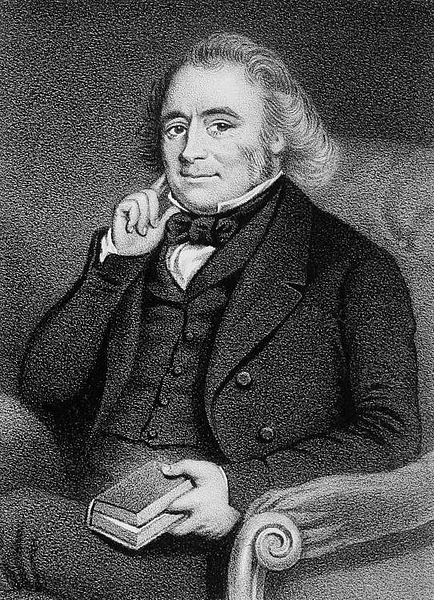
As a boy, Samuel Taylor Coleridge’s son Hartley invented an imaginary world called Ejuxria, with a detailed history and geography that he described to his brother Derwent as he created it. Derwent later recalled:
The Ejuxrian world presented a complete analogon to the world of fact, so far as it was known to Hartley, complete in all its parts; furnishing a theatre and scene of action, with dramatis personae and machinery, in which, day after day, for the space of long years, he went on evolving the complicated drama of existence. There were many nations, continental and insular, each with its separate history, civil, ecclesiastical, and literary, its forms of religion and government, and specific national character. When at length a sense of unreality was forced upon him, and he felt himself obliged to account for his knowledge of, and connection with, this distant land, he had a story … of a great bird, by which he was transported to and fro. But he recurred to these explanations with great reluctance and got rid of them as quickly as possible. Once I asked him how it came that his absence on these occasions was not observed; — but he was angry and mortified, and I never repeated the experiment.
Robert Southey and Hartley’s mother saw to it that “a spot of waste ground was appropriated for Hartley’s use: this was divided into kingdoms and subdivided into provinces, each of the former being assigned to one of his playmates. A canal was to run through the whole, upon which ships were to be built. … War was to be declared and battles fought between the sovereign powers … [Hartley] had a scheme for training cats and even rats for various offices and labours, civil and military. … But how he talked! and how his hearers, one of them a playfellow from the town, the Sancho Panza of our Don Quixote, listened and believed!”
Derwent believed that Hartley kept elaborating Ejuxria even in adulthood. In Private Lives of the Ancient Mariner, Molly Lefebure speculates that Hartley’s great bird may eventually have evolved into an albatross in Samuel Coleridge’s mind. “Birds of such omen do not come into one’s life simply to be forgotten,” she writes. “They perch on the masthead of shrouded memory to swoop down into close view at some mysteriously given moment.”
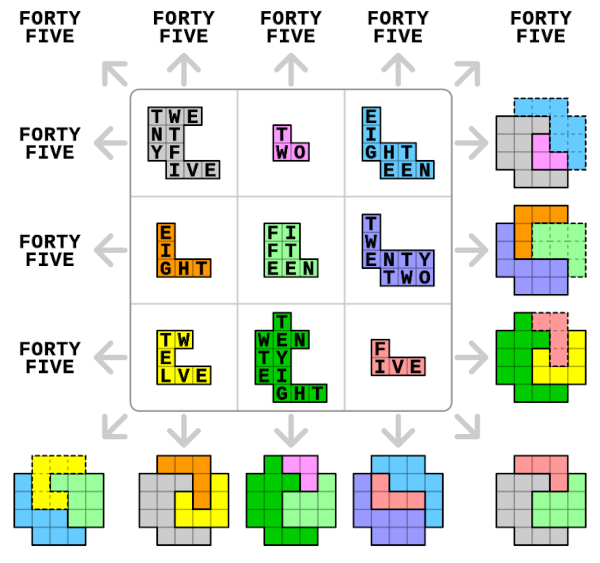
A stunning geometric alphamagic square by Lee Sallows. The 3 × 3 grid is a familiar magic square in which each number is spelled out: The first cell contains the number 25, the second 2, and so on. Interpreted in this way, each row, column, and long diagonal sums to 45.
But there’s more: The English name of the number in each cell has been arranged onto a distinctive tile, such that the three tiles in any row, column, or long diagonal can be combined to form the same 21-cell figure, as shown. (Shapes with dotted outlines have been turned over.)
And yet more: Count the number of letters in each of the number names (or, equivalently, count the number of cells that make up each tile). So, for example, TWENTY-FIVE has 10 letters, so replace the TWENTYFIVE tile with the number 10. Similarly, replace TWO with 3, EIGHTEEN with 8, and so on. This produces another magic square:
10 3 8 5 7 9 6 11 4
Each row, column, and long diagonal totals 21.
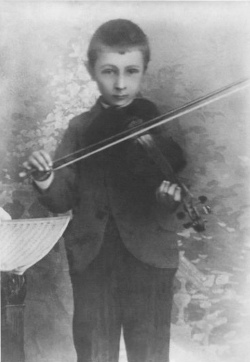
Composer Bohuslav Martinu had a remarkably inauspicious start in life: He was born in a church tower in Bohemia, which the town had granted to his father, a sexton. A sickly child, he often had to be carried up the 143 stairs on his father’s back. He was shy, reticent, and physically uncoordinated. “It would be hard to imagine a more unpromising environment for a child composer, for there was no significant musical tradition within the family and for several years he hardly ever ventured from the tower,” writes Barry Cooper in Child Composers and Their Works.
He excelled in violin, but since manuscript paper wasn’t available to him it’s not clear how many of his early compositions have been lost. When he ventured to the Prague Conservatory in 1906, he offered a three-movement string quartet that he’d written at age 10. He hadn’t even learned the alto clef, and used the treble clef instead for the viola part.
His mother said that the director “was so impressed by Bohus’ composition that at first he doubted whether the score was my son’s own work, and asked who had helped him.” But no one in his village would have been skillful enough to do so.
They accepted him, and he went on to a distinguished international career, writing six symphonies, 15 operas, 14 ballet scores, and a wide range of orchestral, chamber, vocal, and instrumental works.
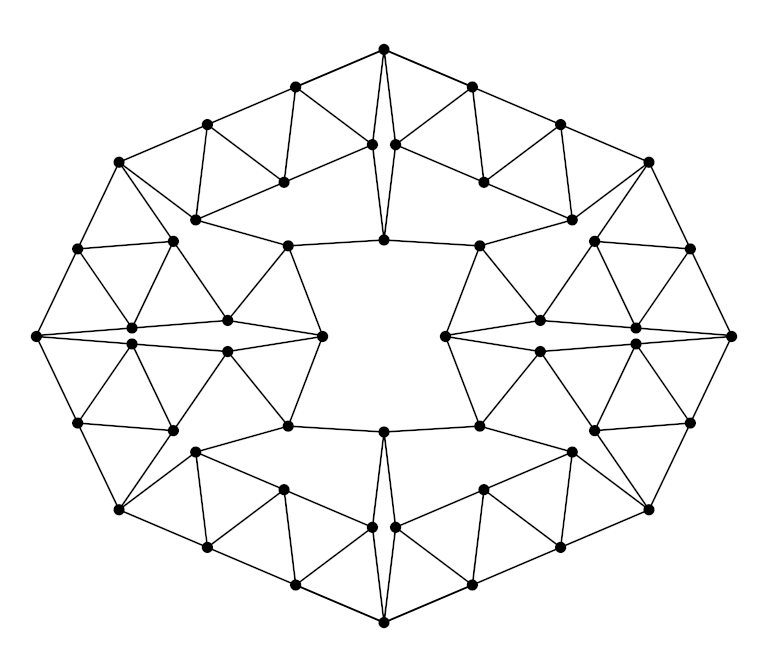
I’m just sharing this because I think it’s pretty — it’s the smallest arrangement of identical non-crossing matchsticks that one can make on a tabletop in which each match-end touches three others.
Presented by German mathematician Heiko Harborth in 1986, it’s known as the Harborth graph.